The Ministry of Defence has confirmed that Operation Interflex, the UK’s flagship programme to train Ukrainian forces, will be extended through to the end of 2026.
The announcement, made by Defence Secretary John Healey on Ukrainian Independence Day, underscores Britain’s long-term commitment to bolstering Kyiv’s military strength both for the ongoing war and as a deterrent under any eventual peace settlement.
Since 2022, more than 50,000 Ukrainian recruits have been trained in Britain under Interflex, with the UK coordinating support from 13 partner nations. What began as a five-week basic infantry course has steadily expanded into a more comprehensive system, with seven-week cycles and new specialist modules.
“The UK is united for Ukraine. We will continue to step up our support alongside allies, so that Ukraine can defend today and deter tomorrow,” Healey said.
“On this special day for the freedom and democracy of the Ukrainian people, we are ramping up and evolving our world-leading training support that has given more than 50,000 Ukrainians vital combat skills.”
A central change in the programme is its evolution towards leadership and instructor training. Two additional courses now sit alongside basic infantry training: one for platoon and section commanders, and another preparing new instructors who can in turn build Ukraine’s indigenous training capacity.
Survey data from Ukrainian trainees illustrates the impact. Between January and August 2025, 83% of participants in leadership courses said they felt better able to make their troops more survivable, while 93% reported increased confidence in making them more lethal.
Artem, a Ukrainian soldier currently on the Platoon and Company Sergeants Course, described the UK programme as both rigorous and realistic. “I am grateful for the opportunity to take such courses, for the high level of professionalism of the instructors, their dedication to their work, and for their ability to organise both group training and find an individual approach for each of us,” he said.
“I learned how important it is to be prepared for coordinated actions in conditions of increased danger, how to properly coordinate personnel during defence, and planning offensive actions.”


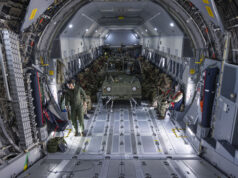



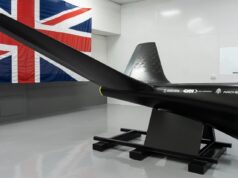
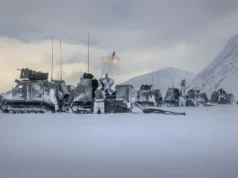

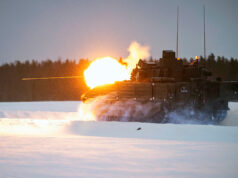

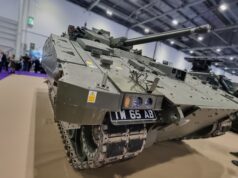

Would not be surprised at all if they return the favour and teach our forces about drone warfare.
Good.
I think this should always have been the focus of Interflex, developing NCO cadre, Junior officers, Staff Officers and Wider Command Courses…
The solution to training all of the infantry was to have many of the experienced military volunteers who flooded into Ukraine over the last 3 years to help undertake this in country, funded by the West, lots of personnel with experience of Iraq and Afghanistan went in and that experience of basic and advanced (in some respects) infantry skills and tactics was wasted
Rudeboy, Much of the past training was focussed either on teaching operator and maintainer equipment skills for kit gifted to them or to turn civvies into soldiers with Phase 1 training. That was surely all very useful.
No issue with the operator and maintainer training, but we should have resourced Phase 1 in western Ukraine, far easier to generate the numbers there. Leadership, Command and Specialist training should have happening in the UK.
The reason I say this is there is a real shortage of NCO and experienced Junior Officers in Ukraine, thats where we should have concentrated our efforts.
That would also have meant placing British troops in Ukraine where there are frequent Russian missile strikes, it also would require Ukraine to provide accommodation and training estate for recruits.
NCO’s take years to create, and experienced Junior Officers only get experience with time, so I’m not exactly sure what you think was going to happen here?
Why would we be placing British Troops in Ukraine???
I made it clear that it would have been provided by the thousands of experienced Western soldiers who went to Ukraine over the last few years….and there are charitable ‘contractor’ operations that have been doing that exact thing in Ukraine for some years….
Accommodation and Training Estate? Ukraine is vast, and far better equipped in terms of military land than the UK is. Can we exercise full Armd Brigades in the UK? Fire artillery at full charge? Of course not…but the Ukrainian’s can…and the western part has not been targeted extensively, and advance warning
Are you aware that between 2014 and 2022 800,000 Ukrainian soldiers rotated through the ATO? The experience was already there….it just needed some organisation and some resourcing. Plenty of experienced soldiers who could have been given NCO courses…
And NCO’s don’t take years….how do you think we managed in WW1 and WW2?
“but we should have resourced Phase 1 in western Ukraine, far easier to generate the numbers there. ” Your words. If you don’t want to put troops into Ukraine to carry out Phase 1 training you are not going to be resourcing phase 1.
Ukraine is large, but it’s training estate isn’t. We also aren’t forming armoured Brigades so that’s a bad faith argument (nor is firing artillery at full charge required but again, not relevant).
Another bad argument to close out: NCO’s do take years to generate. Citing World War 1 is a particularly stupid move by yourself: The Army struggled for years because it expanded RAPIDLY and didn’t have an experienced NCO corps. As much as the Lions lead by Donkeys is beloved by the uniformed public, the truth is that a lot of the troops on the ground where just as much donkeys, and struggled to operate, one of the (many) things that had changed by 1918 was that there was an NCO corps with 3-4 years of experience under their belt.
WW2 we started rebuilding the army years before the war started, and again, the Army struggled for a long time before that foundation was rebuild (and even then only a small part of the army was deployed at any one time until about 44-45). So how did we manage in the World Wars? Badly.
Good, sounds like the feedback has been taken into account and they’re looking to provide the most relevant training possible. Hopefully that feedback is also being used to influence our own training where applicable- I believe it has.
From what I hear from a few sources, Ukraine’s big problem is structural and organisational- in that there’s not enough appropriate delegation and far too much micro-management at too senior a level. Making their responses slow and less effective, and sometimes too late and downright dangerous/lethal for their frontline personnel.
Anything that we can be doing to improve on that via our training will be a big help. Perhaps a Ukrainian staff-level training cadre or something.
‘Evening Joe.
“there’s not enough appropriate delegation and far too much micro-management at too senior a level”. Classic Russian military doctrine – it showed particularly when they had an unexpected thrashing after entering Ukraine 3 years ago.
Of course, historically, I guess senior Ukraine commanders would have been closer to Russian doctrine than they are now? So it may take some time to purge that from the UKR military; but clearly, the UKR army has already shown how nimble and flexible they can be, when left to make their own decisions on the battlefield.
Yes, that’s certainly the message in what I’ve read. Looking at the age of Syrsky and others, and the lack of investment in Ukraine in general since the fall of the Soviet Union, I would expect their formative training has been almost 100% Soviet/Russian. It’s only really been since 2014 that we’ve had significantly more input into the Ukrainian military, and more at a lower level than the general staff.
Well said 💯
I’ve pretty much said the same thing in conversations
And even the serving staff are not scared of pointing out the situation on the ground (for OPSEC, I won’t give names!)
I was saying they should be given flexibility to improvise and take chances and counterattack more often!
Funny as this week, they have made some reasonable territorial gains, and russians are being pushed back. I hope they continue to advance
The frontline is very fluid, and grey zones are changing daily
Many think that Syrsky’s promotion, as an old Soviet-style doctrine commander, is unfortunately tilting the balance backwards again.
Then again, the Army has been modernising towards a more Western \ NATO style
The ongoing restructuring in the Ukrainian Army should help, but it’s not a quick fix, but a long-haul process
Yes, they have a long way to go. What I have read, from multiple sources, is that the normal structure of Corps/Division/Brigade, which allows for manageable delegation of resource and authority is not being followed. So top level staff (Syrsky and crew) are micromanaging brigades and sometimes even battalions in some critical areas, while the lower levels of command are either side-stepped, given their own over-detailed plans to follow, under-resourced or a combination of the above.
That said, as you noted, it should be recognised how far they’ve come. Before this all kicked off, Ukraine was (stereotypically) known for organised crime, honeytrap scams, and mail order brides. Now, there is massive crackdown on corruption, fundamental change in how Ukrainians view themselves as a nation, and (more specifically) they’re fielding some military units that are seriously effective on the ground. Ones that we are learning a thing or two from, in terms of drone ops etc. That’s really something, in the space of a few years!
Not so much “not being followed” but more “That’s not how the Ukrainian Ground Forces where organised at all.” There where no Divisions or Corps: It was organized around the Independent Brigade as the primary maneuver element, with anywhere from 8 to 17 Brigades sitting under Regional Operational Commands.
Just to explain also micro-management isn’t really the issue here, Micromanagement with the Ukrainian Independent Brigade structure is actually really hard, because a commander has so many ME’s (maneuver elements) to deal with. I’m sure the ZSU command staff wants to micromanage, and sometimes does, but also I’m sure that if permission is needed for something, eg a counter attack, that permission will take a long time to arrive because Operational Command is dealing with over a dozen brigades plus seperate battalions asking for permissions or orders.
The ZSU ground forces have now, finally, started organising into a Brigade-Corps structure. It’s still not a NATO structure, but it’s still a step up. Where a NATO army will have 2-4 Battalions forming a Brigade, and 2-4 Brigades forming a Division, then 3+ Divisions forming a Corps the ZSU are going with 4-6 Brigades forming a Corps. A casual look suggests these corps will be Command Elements, but maybe not full on Operational Manuever elements in their own right (ie they’ll probably plan, give permissions and orders to Brigades, but where a Division would hold a lot of second line support for it’s Brigades, a ZSU Corps looks like the Brigades will still be structured as Independent Brigades, keeping the Brigade as the primary ME level, rather than the Corps.
Rudeboy, Much of the past training was focussed either on teaching operator and maintainer equipment skills for kit gifted to them or to turn civvies into soldiers with Phase 1 training. That was surely all very useful.